How To Transform Your Microwave into a Dough-Proofing Box
Sneak Preview: As temperatures drop, using your microwave as a dough-proofing box is ideal for cool, drafty kitchens, though with some caveats.
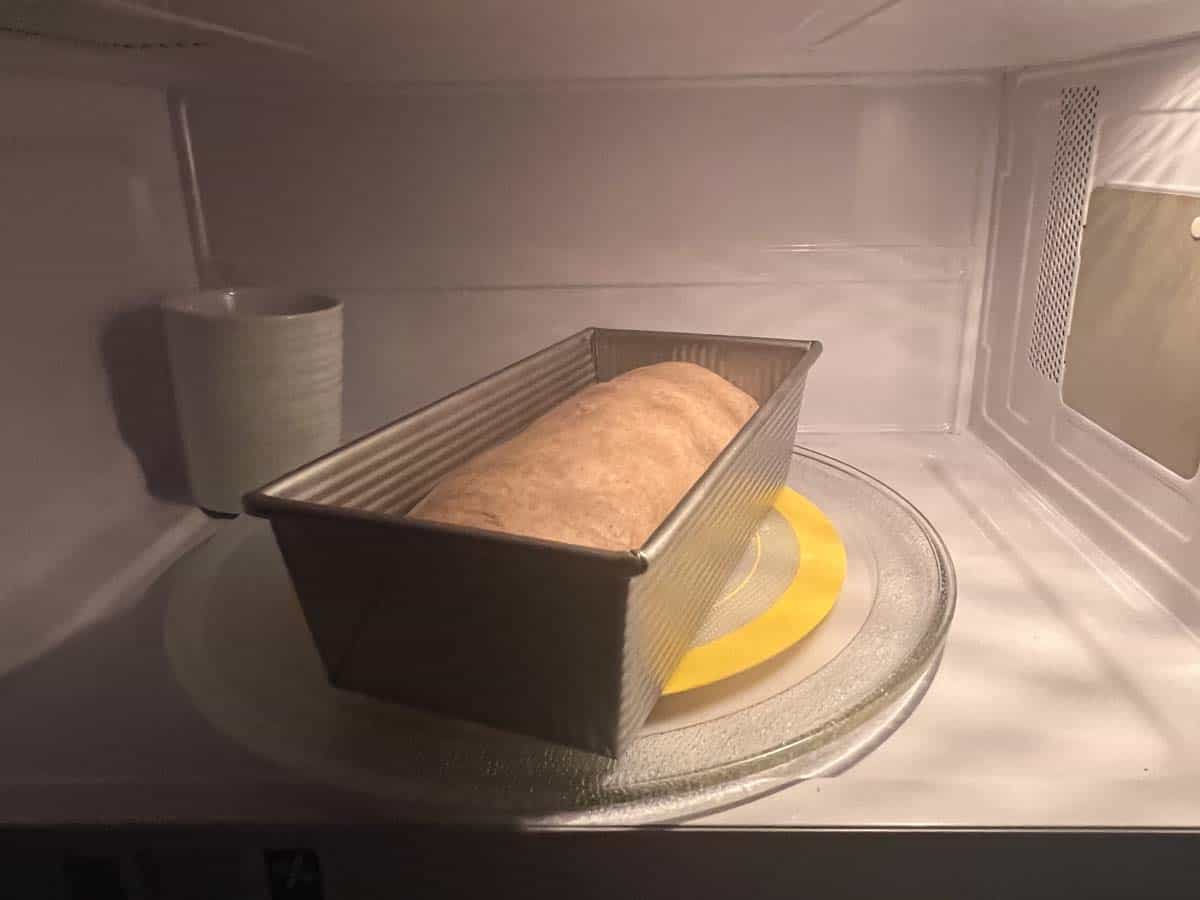
As an Amazon Associate, I earn from qualifying purchases.
Is there anything better than making bread when the wind is howling outside? It’s my favorite time of the year to bake bread. It’s also when I receive the most reader complaints about dense bread.
Cold temperatures can be a challenge for home bread bakers since a cold environment can slow down the rising process for yeast dough. Proofing (allowing the dough to rise) is crucial for light, airy bread with a uniform texture and requires a consistently warm environment to happen in a timely manner.
Please note that an intentional slow rise can be good. Long proofing periods give the yeast time to develop more complex flavors. But a slow rise will change the baking schedule, so it needs to be part of a flexible plan.
Why a Slow Rise Can Be a Problem with Bread Machines
A slow rise can be an issue for bread machine users, as the automated process is unable to assess whether the dough is correctly proofed. As a result, the baking phase may begin before the dough is ready, leading to underproofed, dense bread.
For those of us who stick to the DOUGH cycle, the dough may not double in the time allowed for the first or second rise inside the machine. Luckily, it’s easy to take control and provide the bread dough with the proper warmth and moisture for as long as necessary after the DOUGH cycle.
Whether you use a bread machine from beginning to end or you use only the DOUGH cycle as I do, there’s a high chance your machine may require some assistance. Granted, bread machines come with a warming element, but they have limitations.
If you’re impatient or strictly adhere to a bread recipe without this knowledge, you could end up with dense bread because the dough didn’t rise as much as expected or within the recipe’s suggested timeframe.
Two Easy Solutions for Cool Temperatures
These solutions require no extra equipment like a portable proofing box or an oven with a bread-proof setting.
#1: Move your machine to a warmer spot in the house.
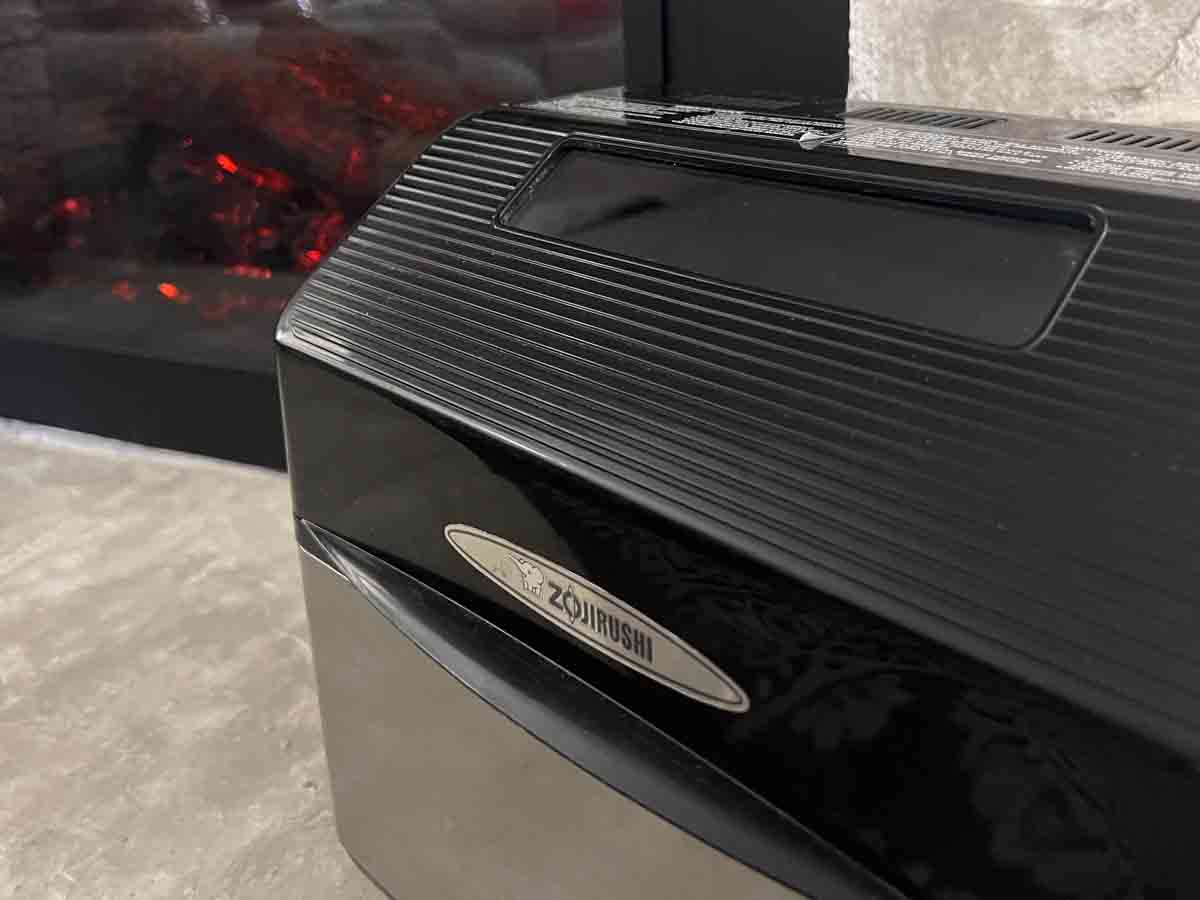
This suggestion might seem straightforward, but it’s important to recognize that your machine may struggle to maintain the ideal temperature. Check with a quick-read digital thermometer.
Insert the thermometer probe directly into the dough. After the dough cools off following the kneading phase, it should hover in the vicinity of 75˚-78˚F (24-26˚C)–the best temperature for fermentation. If the temperature is lower, think about moving the machine to a warmer area of your house.
Extra credit if that warmer area is also humid.
#2: Throw a big towel or blanket over your machine.
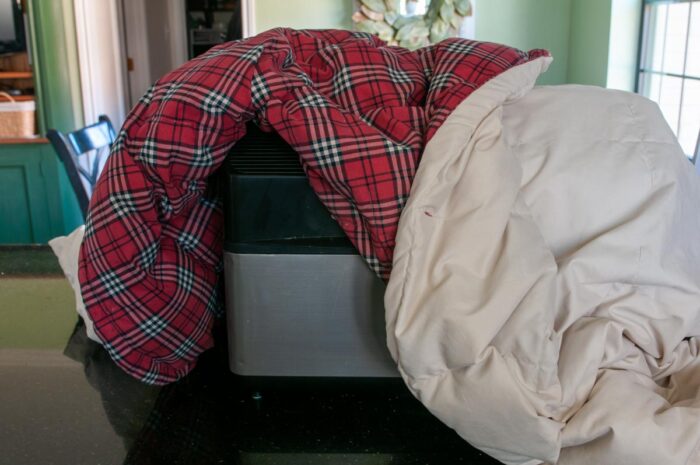
Remember to remove the towel or blanket once the machine starts its preheat phase for baking. Use a timer as a reminder. If unsure about the timing, consult your machine’s manual, as most will provide this information. If the manual is unavailable, monitor the machine and note the timing for future reference.
If you’re using the DOUGH cycle, there’s no need to remove the blanket. But, do ensure that your dough has doubled in size before removing it from the pan for shaping. This could mean leaving the dough in the machine a bit longer than the actual DOUGH cycle.
If neither of these ideas is sufficient, try your microwave oven.
How To Use Your Microwave Oven as a Proofing Box
Why using a microwave oven is a good idea
- It’s easy to heat by boiling a mug of water.
- It’s draft-free.
- The hot water makes a humid environment–favored by yeast dough.
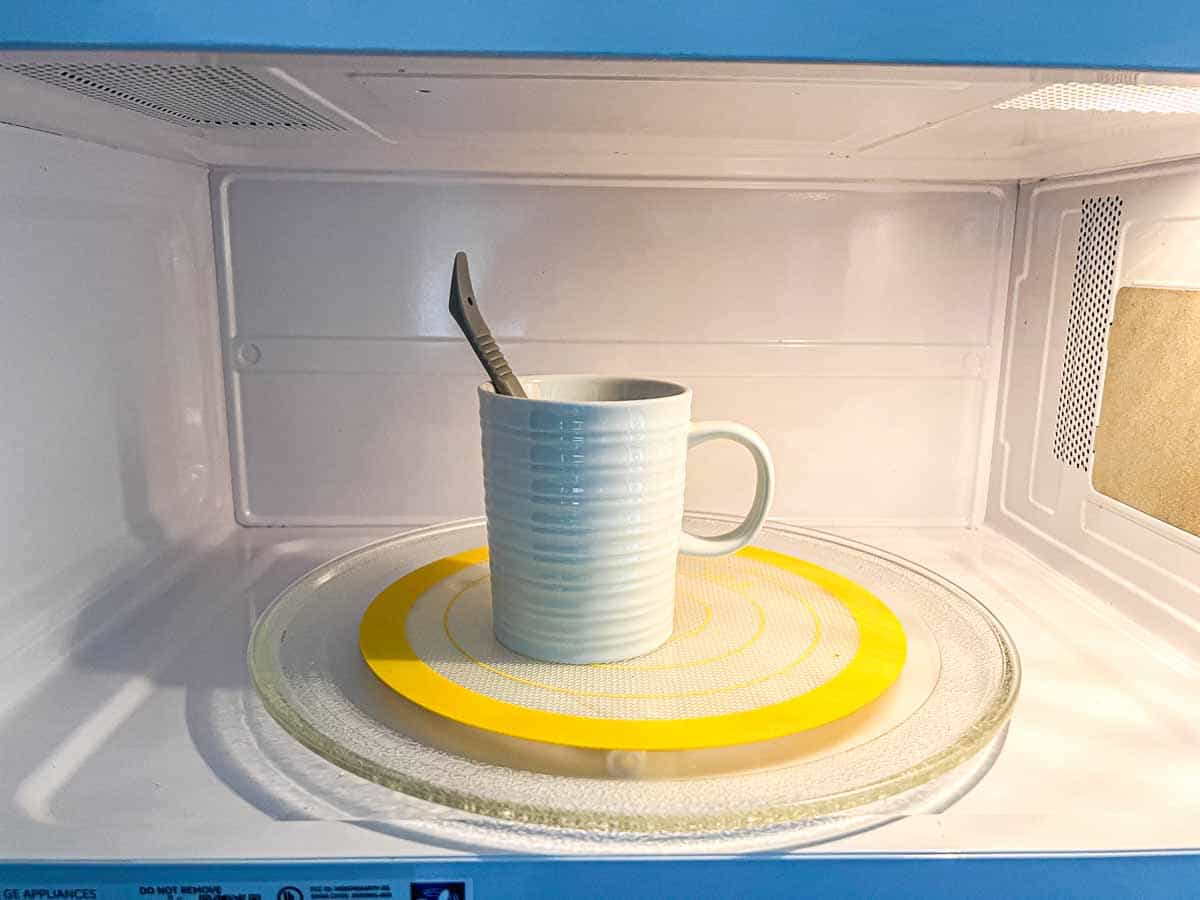
How to set it up
Heat a mug or cup of hot water for two minutes on HIGH. Leave the mug of water in one corner of the microwave. Set the dough inside the microwave, uncovered, and close the door. Do not turn on the microwave with the dough inside.
Two caveats
- Beware of superheating: This term defines a condition when a homogeneous liquid (water) in a smooth container is heated to a temperature that goes above the boiling point (212˚F-100˚C) without the liquid boiling. This happens when the surface tension is stronger than the ability of the liquid to make bubbles.
When the cup of water is disturbed, the tension breaks, and a mini-explosion happens. Considering how hot the water is, it’s easy to get burned if you grab the cup with your hand. I’ve experienced this, and it’s a little scary.
This is less likely with just one cup heated for a short time.
Sometimes, I want my oven to be super steamy, so I heat the water for 4-5 minutes. To avoid superheating, leave a heat-proof silicone spatula in the cup as it heats. - Beware of overproofing: The steamy atmosphere in a heated microwave oven can speed up proofing more quickly than you might imagine. Regularly check the dough. It’s easy to forget about when you don’t see the dough sitting out on the counter. I usually set a timer to check back. Read more about the effects of overproofing and what to do about it in this post.
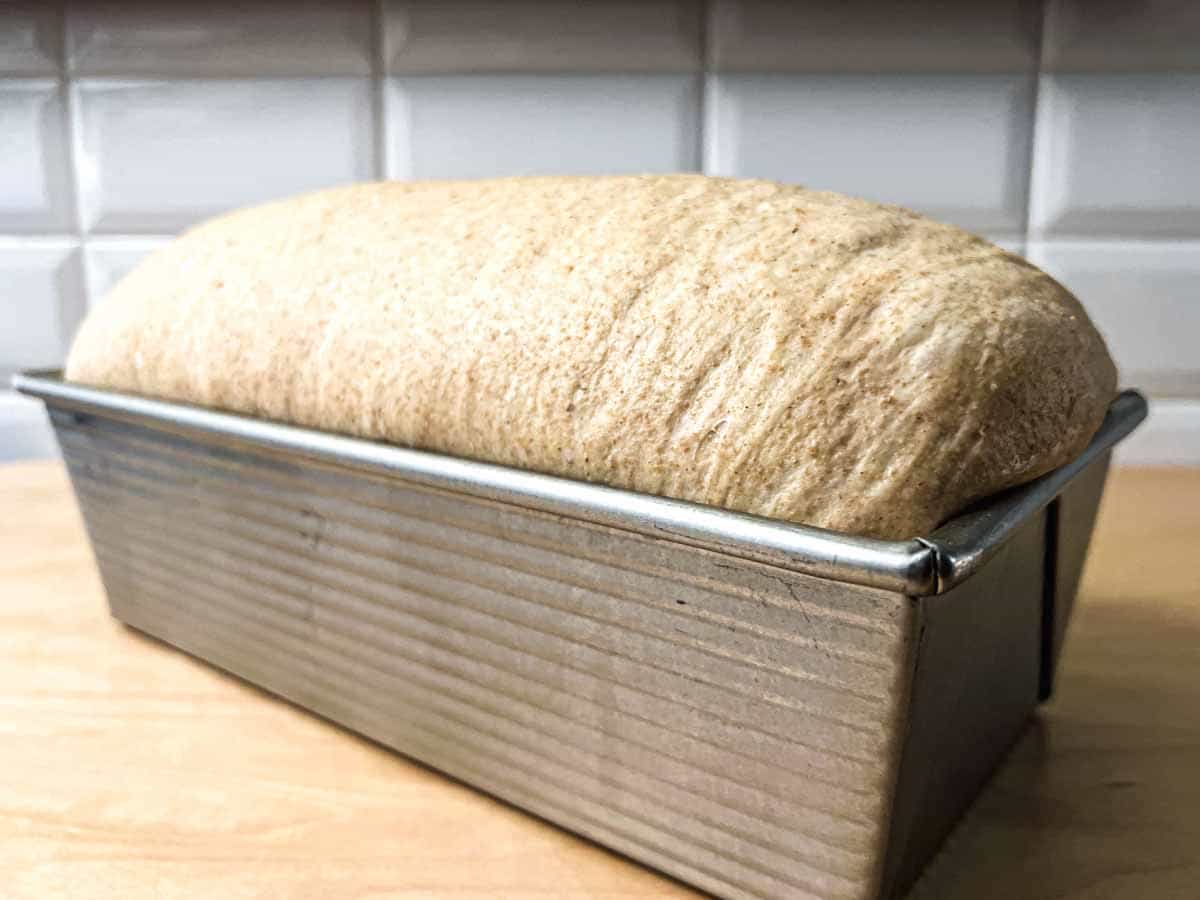
While searching online, you might find instructions for using a microwave to quickly proof your dough by heating the dough on LOW power. I don’t recommend this method as a habit. A long, slow rise is key to developing the best flavor in yeast bread. Whenever possible, it’s better not to rush the process.
A long, slow rise imparts the best flavor to yeast bread. When possible, don’t rush it.
–a paula-ism
FAQs About Proofing Dough
Yes. Newer ovens often have a proofing option. If your oven doesn’t have that, set your oven to 350˚F (180˚C) for one minute. Then, turn off the heat. Or try turning on the oven light. The lights in some ovens produce enough heat to keep the dough in the mood to rise. The ideal temperature should remain between 75 and 80˚F (24 and 27˚C).
Yes. If the dough is sitting on the counter or in a warm oven, cover it with a tea towel or plastic wrap. You can also put the bowl of dough inside a large plastic bag. When proofing in a microwave oven, no cover is necessary if the oven is steamy.
The answer depends on the temperature of the room it’s in and the microwave itself. Check the oven after 30 minutes. If it cools off, remove the dough and reheat the water. Replace the dough in the microwave.
Parting Thoughts: Do you have a clever way to keep the winter chill away from your bread dough? Please share it in the comments. Your idea may help someone else.
If you have questions or suggestions, email me privately for a quick answer: Paula at saladinajar.com. Hope to see you again soon!


Paula Rhodes, owner
As a retired home economist, I created Saladinajar.com to share my belief that you don’t have to be a chef to find joy in creating homemade food worth sharing. Bread machines (used in an unconventional way), homemade yogurt, and quick microwave recipes are my specialty.